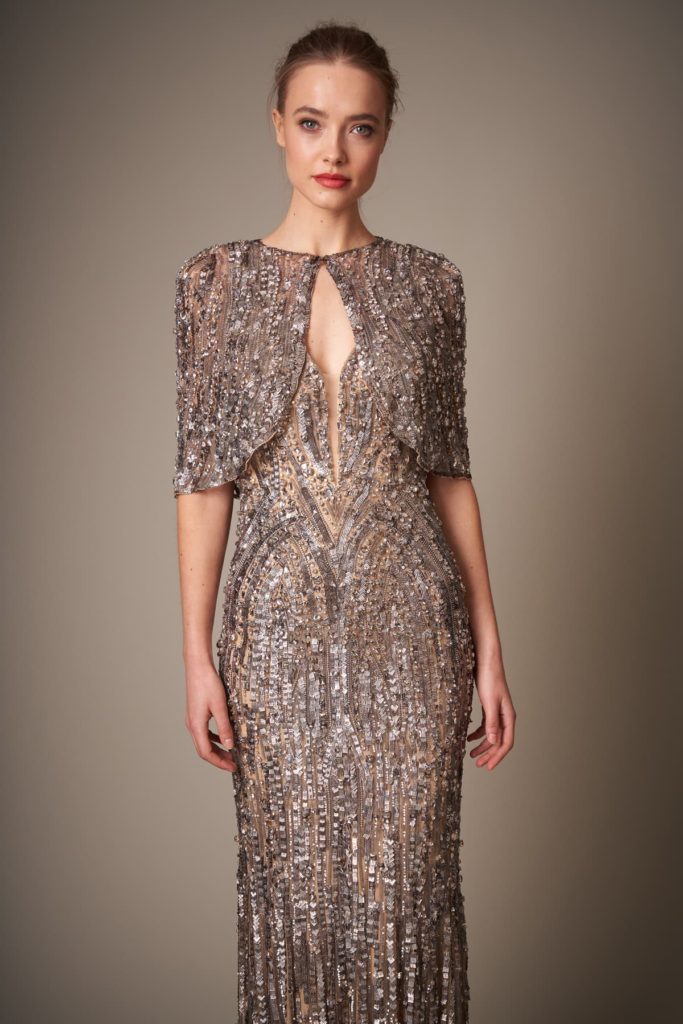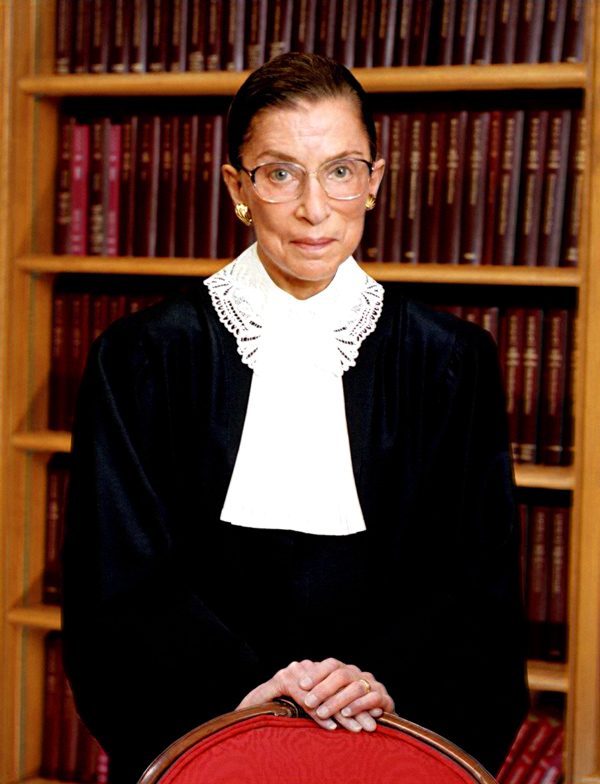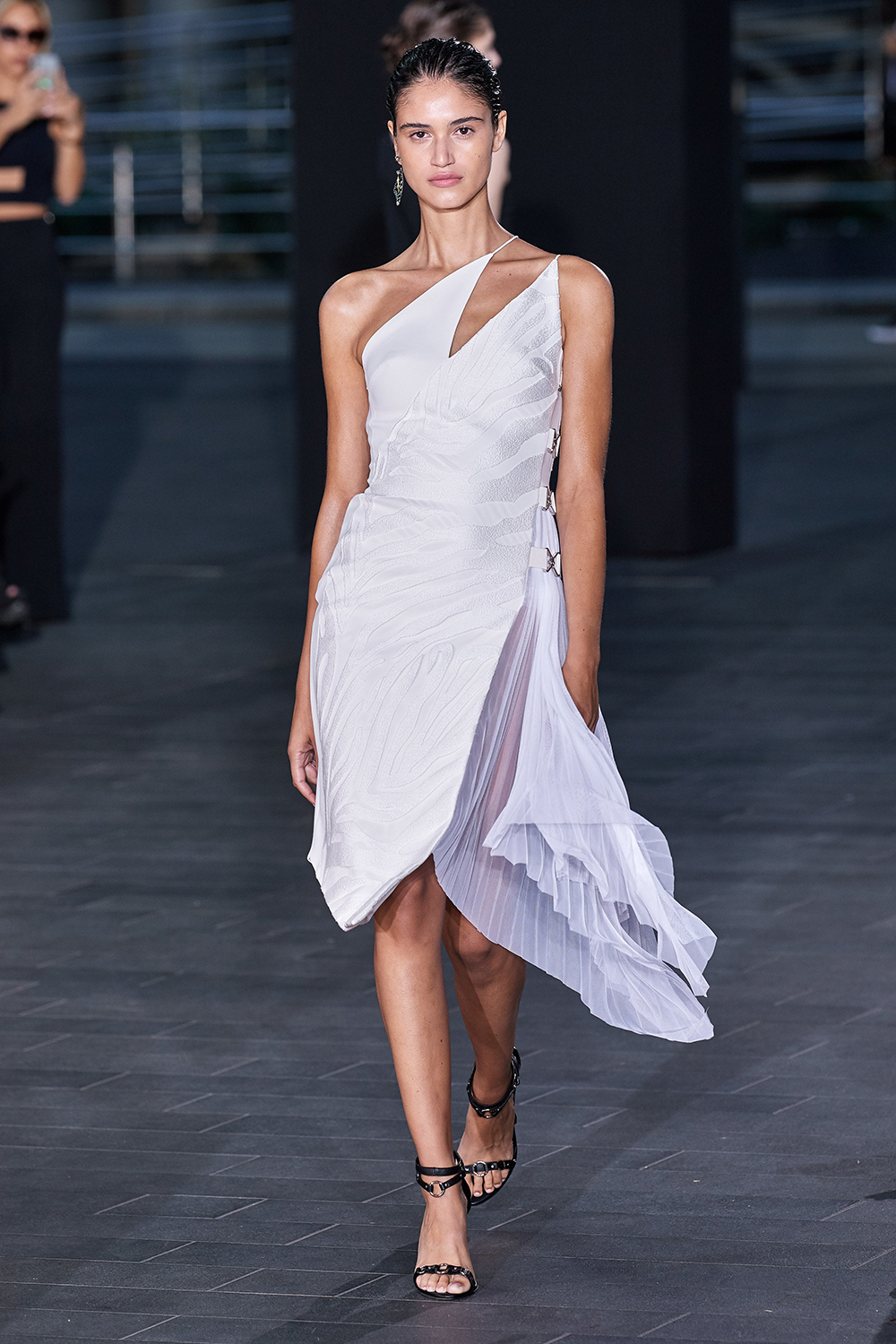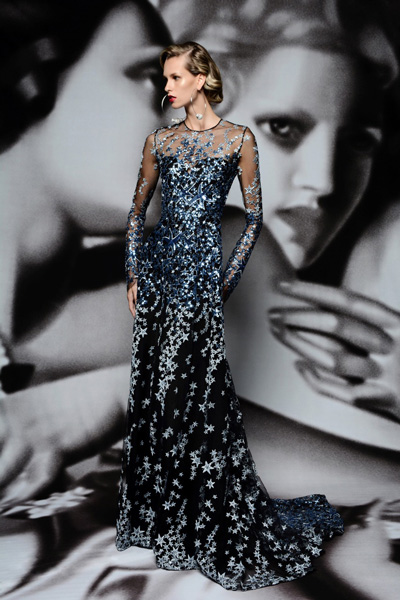
Jenny Packham’s fall ready-to-wear collection, which debuted in Paris in March, confidently looked to Hollywood glam, with metallic, columnar dresses that shone like Oscar himself, goddess gowns with dramatic drop backs and enough pink, feathers and sequins to have filled The Met Costume Institute’s 2019 “Camp” show. Is it any wonder that her clothes have been worn by real-life stars like Adele, Jennifer Aniston, Miley Cyrus, Keira Knightley and Kate Winslet; been featured in the James Bond films “Die Another Day” and “Casino Royale”; and been name-checked on “Gossip Girl,” for which she designed costumes as well as for “Sex and the City”?
“With my dresses, while I’m always very happy that they’re worn out to these fabulous parties to make memories, sometimes I wish I could go with them,” Packham told Vogue. “I mean, it would be wonderful to know what they get up to.”
In Packham’s case, they not only get to swan through movie sets or stay up all night poolside, reveling in the high of an award win, but to adorn a very different kind of glam princess – Catherine, Duchess of Cambridge. The future queen consort has worn Packham on at least eight public occasions, perhaps most famously to the 2012 Olympics Gala Concert, at which her teal gown with the see-through lace back and cap sleeves had a memorable effect.
Not that any of this would go to Packham’s head. For one thing, she’s been in the business too long – debuting at the London Designer show in 1988 after having studied at Southampton College of Art and what was then Saint Marten’s School of Art. (She holds an honorary degree from what was Southampton Solent University, now Solent University.) For another, she has the sense of security born of a close family. (Her Prada-wearing brother, Chris Packham, is the naturalist and TV host.) Even her marriage to Packham company CEO Mathew Anderson, which hit a rough patch, righted itself, producing not only two grown daughters but financial success.
Mostly, though, Packham has a level-headed approach to life and a certain deprecation toward herself, as seen in her new book “How to Make a Dress: Adventures in the Art of Style” (Random House). In it, as reported in WWD, she’s fearless in recounting the disasters as well as the triumphs – the time everyone went to the Burberry show instead of hers, despite her having flown in a techno band from Berlin, causing her to abandon showing in London for New York; and the time a balletic theme proved, well, “tutu” much.
Then there was the time when the fangirl in her got the better of the professional and she waited forever to have her picture taken with Leonardo DiCaprio. She couldn’t bring herself to look at it for months.
But we’re sure she looked fabulous.
Tags: Jenny Packham, fall ready to wear, “How to Make a Dress,” Catherine, Duchess of Cambridge, Adele, Jennifer Aniston, Miley Cyrus, Keira Knightley, Kate Winslet, “Gossip Girl,” “Sex and the City,” “Die Another Day,” “Casino Royale,” James Bond, 2012 London Olympics, Leonardo DiCaprio




